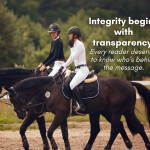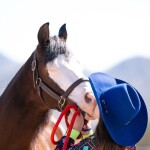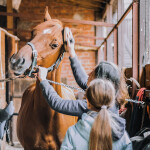Celebrate the fearless legacy of North American cowgirls—from Calamity Jane to modern-day escaramuza riders. Explore their bold history, fight for equality, and lasting impact on rodeo culture across the U.S., Canada, and Mexico.

From the American and Canadian cowgirl to the Mexican charra, where there is rodeo, there are cowgirls. Women are an integral part of rodeo’s history and development, but they had to fight hard to receive recognition and respect from the sport they so dearly loved. As women’s history month comes to a close, this article aims to celebrate the stories, legacies, and hard-won battles of North America’s timeless cowgirls.
The story of these tenacious women on horseback begins with the arrival of the Spanish conquistadors in the early 1500s. The horses they brought with them were quickly adopted by Native Americans, and with the migration of the horse came the migration of the cowboy. There is documentation of Comanche women riding horses in the 1600s, and around that same time, the Mexican vaquero began to appear as well, although they were mostly men.
Jumping ahead to America’s “Wild West” chapter, several famous heroines ride into the scene such as cowgirl Martha “Calamity Jane” Canary, known for her marksmanship, stellar riding abilities, and unruly attitude, as well as markswoman Annie Oakley, whose talent with a gun earned her a spot in Buffalo Bill’s Wild West Show and secured her as an iconic image of women in the Wild West.

In the first half of the twentieth century, cowgirls were tackling very different challenges in America versus Mexico. During the Mexican revolution, which began in 1910, soldaderas (female soldiers) used their horses to stir up dust in order to blind and distract their opponents. This skill eventually formed into an equestrian event known as escaramuza, which involves riding horses in intricate, daring patterns that are set to music. Synchronization is key in this sport, and so is the uniform: vibrant traditional dresses and striking sombreros are essential to escaramuza. The adelitas (contestants) are judged rigidly on dress code. Escaramuza is still alive and well today, having teams in both Mexico and America; it is a glorious tribute to Mexico’s early cowgirls.
In the United States, the twentieth century saw a dramatic influx of women competing in rodeo events. In 1918, women competed alongside men in the inaugural rodeo held in Fort Worth, Texas, in the famous Cowtown Coliseum; this was the first indoor rodeo in the history of the sport. From the 1910s to the 1930s, women participated in rodeo events across the country as bronc riders, relay racers, trick riders, steer ropers, and steer wrestlers. There is no shortage of legendary cowgirls from this period of history with a variety of impressive accomplishments, including famous trick rider and eight-time All-Around cowgirl Tad Lucas, the 1927 Queen of the Pendleton Roundup, and champion relay racer Mabel Strickland, bronc and trick riders Rose Smith and Bea Kirnan, steer wrestler Fox Hastings, and the tragically iconic Bonnie Treadwell McCarroll.
Most of these women competed in multiple events and made their own costumes. This larger-than-life “Golden Age” of women in rodeo was somewhat phased out starting in 1929 following the death of beloved female bronc rider Bonnie McCarroll. At that year’s Pendleton Roundup, Bonnie was trampled by her bronc after becoming trapped by her stirrups. This shocked the country and when the Rodeo Association of America was founded, also in 1929, they were decidedly against women competing in rodeo. This did not shut women out of rodeo completely by any means, but it symbolized a shift toward an era of the sport where women were expected to be more involved with the pageantry side of rodeo rather than the competition side. From these expectations emerged “sponsor girls” and “ranch girls” whose job was to advertise the rodeos. They were the precursors to rodeo queens, and one of their tricks, which involved circling barrels in the arena during the performance, developed into the high-speed event of barrel racing (this event is now based in athletics rather than pageantry).
Unsatisfied with the limited roles women had in rodeo, cowgirls made history once again when thirty-eight of them met in a San Angelo hotel room in 1948 to establish an association by women for women. The Girls Rodeo Association was founded to ensure women had a place to compete as respected athletes. Among its founding members were barrel racers, roughstock riders, trick riders, and ropers. Today, the GRA is known as the Women’s Professional Rodeo Association, or the WPRA, and it offers barrel racing, team roping, breakaway roping, and tie-down roping; it also sanctions the women’s events at PRCA rodeos.
In Canada, the cowboy way of life began to take hold in the 1870s thanks to American cattle drivers herding cattle up from the Northwest, although British Columbia had a “prototype” cowboy called the buckaroo that dates back to 1811. By way of an event in Fort Macleod, Alberta, rodeo came to Canada in 1891. The Calgary Stampede, Canada’s most famous rodeo, began in 1912, and cowgirls competed in this inaugural show. The first Canadian Finals Rodeo was in 1974, and Canada has its own Pro Rodeo Hall of Fame and its own Girls Rodeo Association. Additionally, Canada has a drill team known as the Canadian Cowgirls, and their inclusion in the 2013 Rose Parade marked the first time a Canadian group has ever been invited to participate.
Despite all the contributions and character that women have given rodeo, their place in the arena has been wrested away by discrimination at many points in history, and their fight to be recognized as equals is still an ongoing one. For example, in Canada, women were prohibited from competing in rodeo between 1923-1958. They were not a part of the first Canadian Finals Rodeo in 1974 because they could not become members of the Canadian Rodeo Cowboys Association until 1975. Even the Calgary Stampede, whose early days had included women, did not have barrel racing after the end of the prohibition until 1982, only for the event to be dropped once more in 1989 following women being kicked out of the Canadian Professional Rodeo Association in 1988. In 1990, barrel racing returned to the Stampede, and in 1995, women were reinstated as members of the CPRA with considerably more rights. The Canadian Girls Rodeo Association and the Canadian Barrel Racers Association have both played vital roles in advocating for women in Canadian rodeo. In Mexico, escaramuza, the only women’s event in charrería, did not become an official part of Mexico’s national sport until 1992, despite having existed since the 1950s. In the United States, barrel racing has been a part of the National Finals Rodeo since 1959, although it was not included as part of the main NFR until 1967.
There are countless cowgirls across Mexico, Canada, and America who have worked for the full equality of women in rodeo, and their efforts have not been in vain. In America, equal pay for barrel racers began to take root in the 1980s, finally reaching the crown of the sport, the NFR, in 1998. In Canada, women became eligible for equal money in 1995. Recently, the sport of breakaway roping has exploded in the United States thanks to its inclusion as the second women’s event in professional rodeo. However, equality for breakaway ropers is a continuous battle, as not all rodeos have breakaway roping yet, and these cowgirls are still not paid equally at the NFR or included as part of the main NFR in the Thomas & Mack Center. The first National Finals Breakaway Roping was held in 2020 at the same time as the NFR, but rodeo fans and athletes are becoming increasingly vocal about their desire for breakaway to be fully embraced as an equal event in professional rodeo.
The North American cowgirl has a rich, diverse history deeply entwined with women’s rights, and the fight for equality is extremely in tune with rodeo’s themes of freedom. The heroines of rodeo demonstrate what it means to stay tough, speak up, and conquer fear. They are symbols of the Wild West and the great dream of liberty inside everyone, and as they ride into the future, they will continue to inspire people around the globe.
Long live cowgirls!








